5 Reasons Why C2C Marketing is the Missing Ingredient in Your Sales Funnel
Consumer-to-consumer marketing puts consumer reviews and recommendations at the center of your marketing strategy. Here's why it's key for brands.
As retail and ecommerce evolve, so do consumer expectations. Here are the biggest consumer behavior trends brands should know in 2022 and beyond.
%20(1).jpg)
.jpg?width=800&name=consumer%20behavior%20trends%20cover%20(1).jpg)
Are you up to date on the latest consumer trends? If you’re not 100% sure, we hear you!
Because the wants and needs of consumers are always evolving. Just when you think you’ve mastered what makes your customers tick, things change.
Case in point: marketing attribution is getting tougher. Building relationships with your customers is crucial to reaching your audience. This is especially true as third-party consumer data becomes scarce.
But don’t forget about the big picture!
What motivates modern consumers? What makes them loyal? What makes them bounce?
With a pulse on the latest consumer behavior trends, you can tap into what your customers want and exceed their expectations.
We’ve been keeping a close eye on what brands and marketers have been up to this year.
So many new trends and reports. So much data. Now it’s time to spill the tea!
Below are the biggest consumer trends to help brands reach and retain more customers.
Coming out of multiple years of pandemic isolation, consumers are eager to connect with communities. This includes communities of shoppers. Social media has become the go-to hub of product recommendations among consumers at large.
Fact: 88% of consumers trust recommendations from people they know above all else.
But consider how the definition of “people you know” is changing.
Sure, the phrase once referred to friends and family. Now consumers are holding recommendations from everyday creators with just as much weight
That’s because creators are people. They share the same values and challenges as their audiences. This is another reason why brands are moving away from polished “influencers.”
Enter the era of consumer-to-consumer marketing.
Look at how TikTok has become so big for shopping and product discovery. There are consumer communities made up of everyday creators for just about all types of products.
We’re not just talking about “popular” industries like fashion, either. For reference, there are 650+ million views on the #keebtok tag (that’s the community tag for mechanical keyboards). How’s that for niche?
Consumers want to connect with people like themselves. This is especially true in pursuit of products that solve unique problems. For example, check out how many are posting advice and product recs for specific skincare issues.

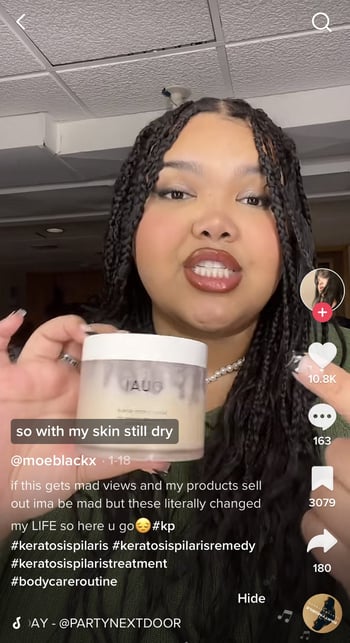
Source: @moeblackx
Brands featured in these communities have opportunities to delight customers and drive business. The effectiveness of what TikTok calls community commerce is well-documented. This represents one of the biggest shifts in consumer behavior long-term.
Getting “in” with customer communities often happens organically. That said, there are steps brands can take to boost their visibility and get recommended themselves. This includes:
More and more people are going straight to social when it comes to both researching and discovering products.
Consider how 67% of TikTok users claim that the platform inspires them to shop even when they weren’t planning to. Similar rules apply to Instagram. New features like universal product tagging and Instagram shopping make it easy to buy directly from social media.
Consumer behavior trends point to shoppers trusting people over brands. As a result, user-generated content is crucial to the modern customer experience. From seeing products in action to reading reviews in real-time, UGC is in high demand.
UGC provides a way for consumers to get unfiltered and authentic thoughts for their future purchases. As an added bonus, brands benefit from the social proof of having armies of customers post about products.
Aerie is a great example of a brand that seamlessly incorporates UGC into their Instagram feed. With other 360,000+ posts featuring the #AerieREAL tag, this highlights what an engaged customer community looks like.
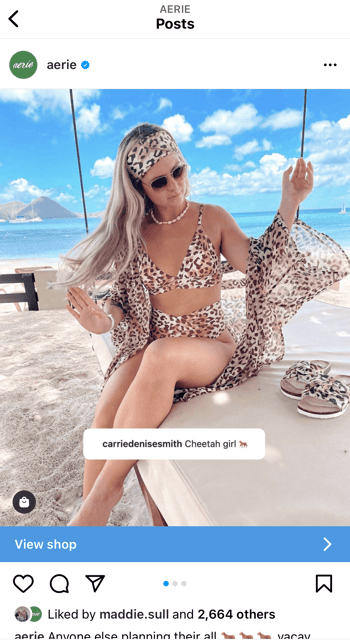
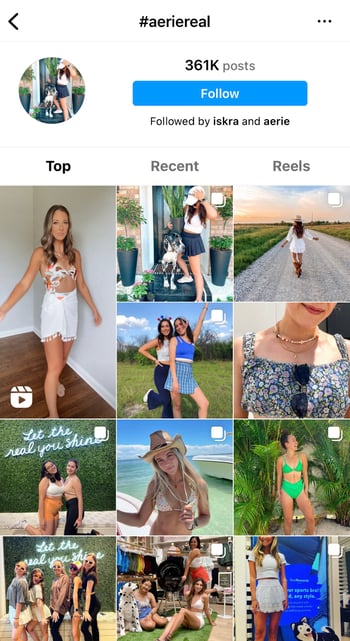
Source: @aerie
The brand also has a dedicated customer photo feed on their website. Both this and their Instagram feed are full of tagged, shoppable products. This highlights how brands can seamlessly funnel sales through their social presence.
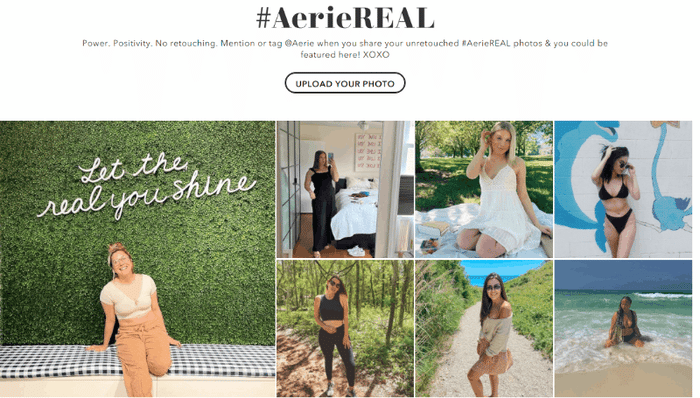
Source: ae.com
Purchasing directly from posts is becoming more common but it’s certainly not the end-all, be-all of social commerce. Consumers are still taking time to research products, read reviews and watch brands’ socials before buying.
But by providing multiple channels for discovery and checkout, brands can streamline the process.
As commerce becomes more automated and streamlined, consumers crave personalized experiences.
So much so that people will willingly share personal information for VIP treatment. Food for thought: 74% of consumers reward brands with loyalty when the brand uses data in a way that makes them feel comfortable.
This is notable in a world where two-thirds of people are concerned about the level of data gathered by businesses. The key for brands? Use your customer’s data in a meaningful (and totally not creepy) way.
Providing personalized recommendations and support is an effective way to do just that. Consumer habits highlight how people desire for brands to act as digital concierges. Tools such as quizzes and product recommendation engines are helping deliver that sort of experience.
Quizzes are particularly powerful. They represent a chance to gather valuable information from shoppers in a way that consumers are comfortable with. The longer shoppers spend sharing information with you, the more you get to know them. This creates a connection.
For example, Versed offers a short and sweet “Skin Decoder Quiz” that provides people with a personalized skincare regimen. Upon completion, you get a product bundle based on your individual answers.
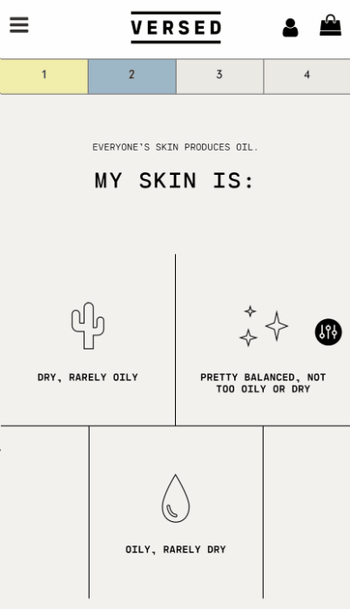
Source: versedskin.com
Anything you can do to show shoppers that you have their undivided attention is a plus. Interactions via social comments are a low-hanging way to lend customers a hand. Check out how oVertone provides a thoughtful product recommendation in their Instagram comments:
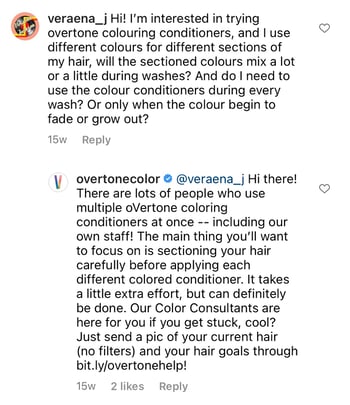 Source: @overtone
Source: @overtone
The fact that the biggest consumer trends are about being human is telling. Actually, that leads us right to our next trend!
Consumers want brands to be clear and upfront about their beliefs and values.
This might be surprising to some. The numbers don’t lie, though: 71% of consumers believe it's important for brands to take a stand on sensitive issues.
Many brands are terrified of being perceived as “political” or otherwise “choosing sides.” Thing is, taking a stand isn’t a one-size-fits-all affair. Consider how brands of all shapes and sizes can:
Rare Beauty is an example of a brand that puts their values front and center. The company regularly posts mental health content and resources for followers on Instagram. They also donate 1% of all sales to the Rare Impact Fund in support of mental health services.
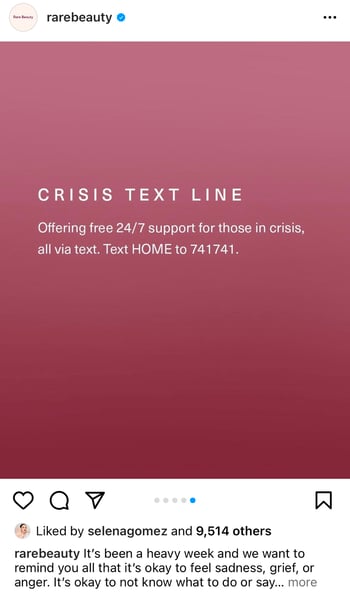
Source: @rarebeauty
This highlights how brands can support their communities beyond just products. Rare Beauty often receives positive feedback for raising awareness on such an important topic.
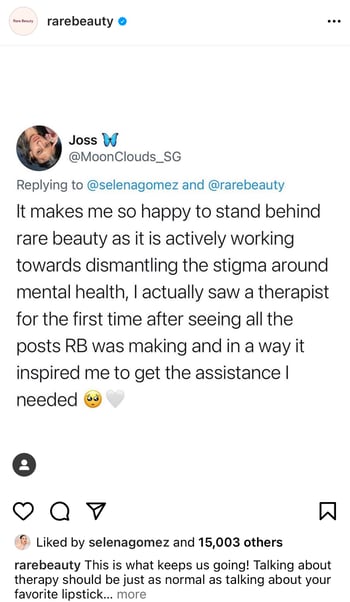
Source: @rarebeauty
People take notice when brands speak up. They also take notice when brands don’t.
Let’s be clear, though: activism should not be a marketing opportunity. Brands shouldn’t piggyback on causes “just because.” Consumers can see right through performance activism. The causes and values you speak up on should align with both your brand and audience.
No funny business here: 57% of consumers prefer to see marketing messages that make them laugh.
Comedic campaigns remain one of the biggest consumer trends in marketing because they tend to pop off on social media. Humor helps brands provide entertainment value to customers. Not only that but funny ads can result in a meaningful connection with them, too.
Why? Because humorous marketing represents a valuable opportunity to showcase your brand’s personality. For example, Chipotle is always quick to hop on humorous trends and memes with a branded twist.
Source: @chipotle
The brand takes it a step further by cracking sarcastic jokes in their comment section.

Source: @chipotle
Anything you can do to humanize your brand is a plus. Coupled with creator content, humor is a low-hanging way to highlight your human side.
Note: Humor isn’t necessarily appropriate for every brand and that’s totally okay! Be aware that current consumer trends point to buyers supporting brands that offer entertainment value in their marketing. Whether “entertainment” translates to comedy really depends on your brand.
Browse. Add to cart. Checkout.
The old-school buyer’s journey online has gone the way of the dinosaur. Consumers now find themselves in what TikTok refers to as “the infinite loop.”
The short of it? The average consumer is bouncing between a billion platforms and marketing channels prior to any purchase. This includes:
Here’s an illustration of what the actual purchasing journey for modern buyers look like:

Translation? It’s critical for brands to make consistent, ongoing touchpoints with customers. The more engaged your buyers are, the more likely they’ll land on you at the end of their trip through the loop. This includes continuing to interact with customers after they’ve made a purchase.
This is where marketers are hitting a big snag, though. It’s getting more and more difficult to track consumers on the path to purchase. Welcome to the dark funnel!
Brands must find new ways to own their customer data as ad-targeting changes. This is yet again where creators and influencers can help brands reach consumers.
A recent roundtable of marketing experts in The Drum highlights why creators are so valuable as paid ads take a backseat:
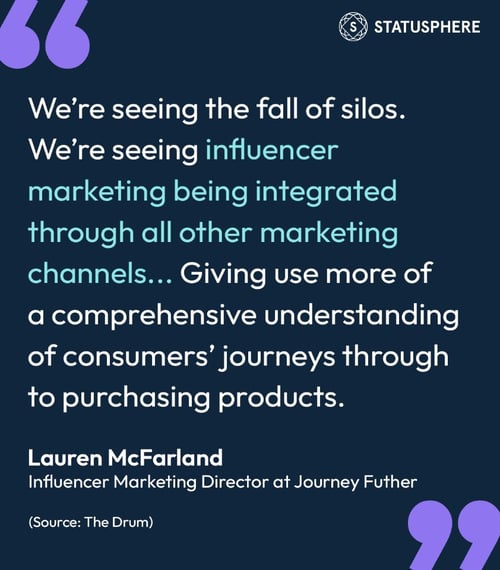
The concept of consistency is more important than ever to customers today. In a world where it feels like anything can happen at any time, being there for your buyers really matters.
What do we mean by “consistency,” though? We’re talking about:
Think about it. Let’s say you sit down at your go-to restaurant to order your favorite dish but it's disappeared from the menu without a trace. You’d be confused, right? Probably disappointed, too. The same goes for your customers when your products suddenly change or you’re suddenly out of stock.
Consumers remain loyal to brands that provide them with something they can’t get elsewhere. This isn’t always something tangible like a specific product. Oftentimes it’s related to service and experience.
Likewise, 80% of consumers said that their favorite brands reward their loyalty by providing a “consistent customer experience.” For brands that means:
Chewy is a brilliant example of a company that provides a super consistent (and stellar!) customer experience. The brand gets a ton of love from customers on social media because they constantly go above and beyond.

Source: @goldengateblond
The brand makes an effort to consistently respond to all feedback. A quick glance at their Twitter highlights how dedicated the brand is to making sure every customer comment is heard.
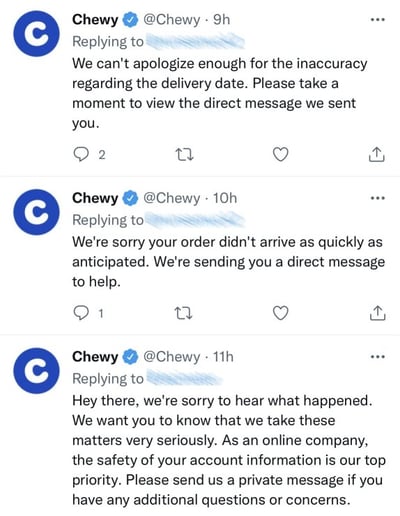

Source: @Chewy
You might not be able to control the economy or supply chain but you can control how you treat your customers.
The key takeaway from the trends above?
Both selling and marketing to modern customers require a human touch.
From your voice and values to showcasing real people using your products, anything you can do to put the people that support your business first is a point in your favor.
We’re already seeing many of these consumer behavior trends play out in a big way. Specifically, how much consumers value the opinions and recommendations of everyday creators.
If your brand wants to highlight its human side, creators can help. Here at Statusphere, we match brands with content creators that know how to speak your audience’s language. Not only that but we also handle all of the heavy lifting for brands. That includes matchmaking, fulfillment, analytics and making sure your creator content makes an impact.
Chat with one of our consumer-to-consumer marketing specialists today to learn how Statusphere can get relevant creators posting about your brand ASAP.
This article was first published in December 2020. It was last updated June 3, 2022.
Consumer-to-consumer marketing puts consumer reviews and recommendations at the center of your marketing strategy. Here's why it's key for brands.
Prepare your CPG brand for success with these marketing tactics, from try-on tools to consumer-to-consumer marketing to product personalization and...
C2C, or consumer-to-consumer, marketing is a marketing methodology in which consumers discover brands from people they trust. Here's why it works.
Be the first to know about the latest tools, trends and strategies in influencer marketing for brands.